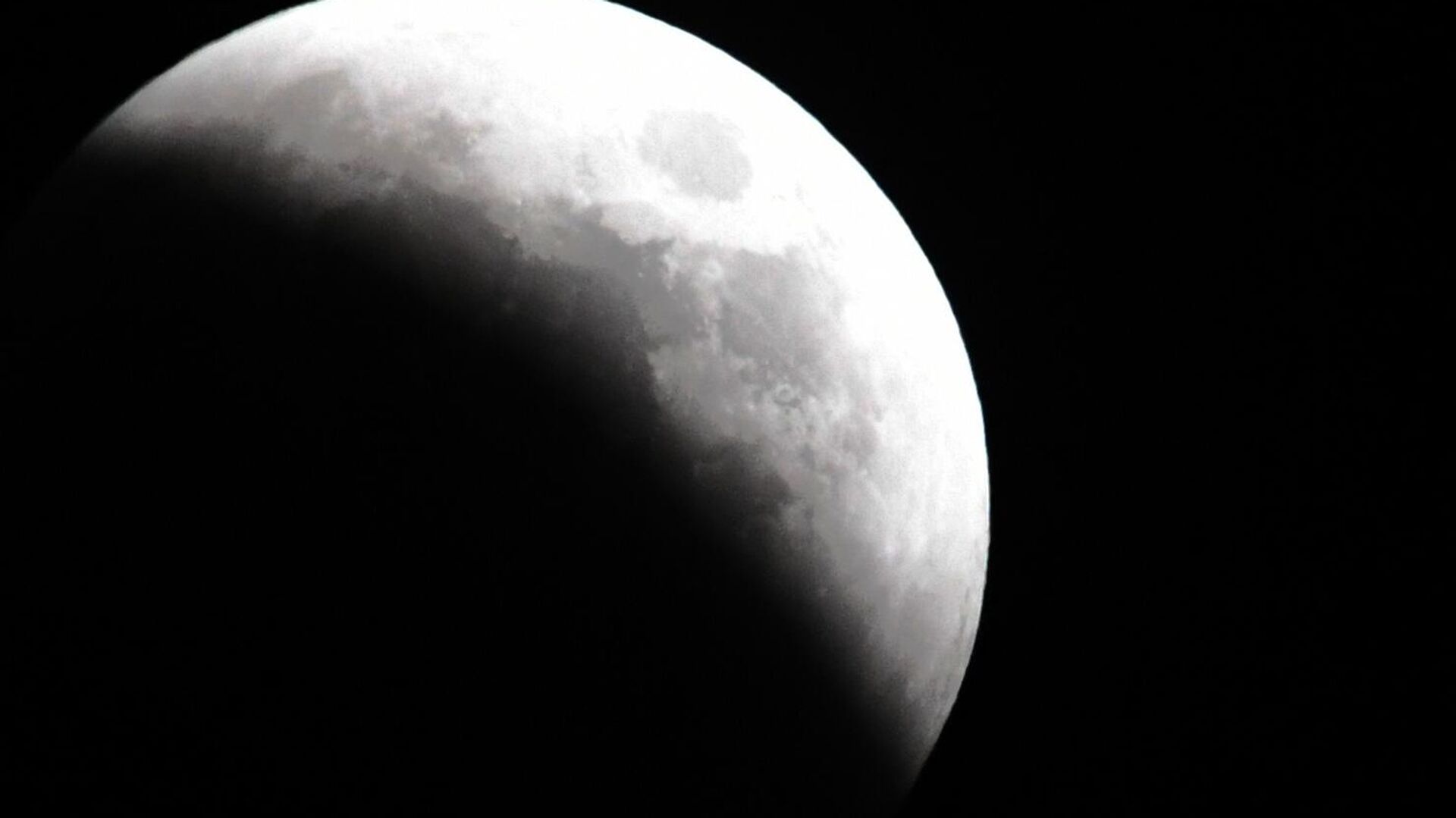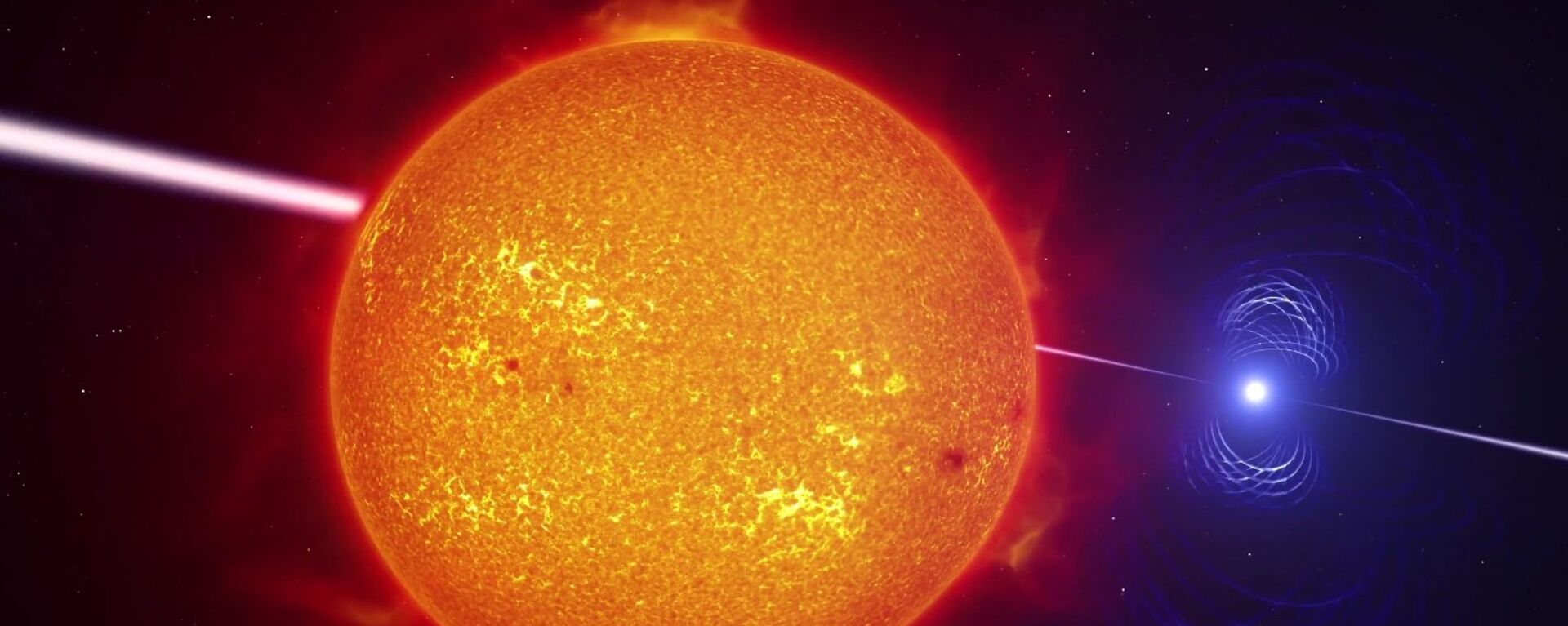https://sputnikglobe.com/20230613/moon-could-be-hosting-life--and-scientists-say-we-could-have-put-it-there-1111099900.html
Moon Could Be Hosting Life — And Scientists Say We Could Have Put It There
Moon Could Be Hosting Life — And Scientists Say We Could Have Put It There
Sputnik International
Future visitors to the moon could be met by quite a surprise if they make it to the South Pole, as new research suggests organisms which might have made their way from Earth could potentially be living there.
2023-06-13T03:56+0000
2023-06-13T03:56+0000
2023-06-13T03:55+0000
beyond politics
science & tech
earth
south pole
nasa
moon
signs of life
https://cdn1.img.sputnikglobe.com/img/07e6/0b/08/1103901788_0:77:1481:910_1920x0_80_0_0_d772c446250a5c20c442fec49af8ffa4.jpg
Future visitors to the moon could be met by quite a surprise if they make it to the lunar south pole, as new research suggests organisms which might have made their way from Earth could potentially be living there.According to Prabal Saxena, a planetary researcher at NASA's Goddard Space Flight Center, it’s possible that forms of microbial life could survive the treacherous conditions of the lunar south pole, where — paradoxically — the extreme cold and lack of oxygen could allow them to survive.The south pole of the moon could be such a place, but what kind of life might be there isn’t yet clear, according to the researcher."We're currently working on understanding which specific organisms may be most suited for surviving in such regions and what areas of the lunar polar regions, including places of interest relevant to exploration, may be most amenable to supporting life," Saxena said.Heather Graham, another member of the study team at NASA’s Goddard center, said scientists are fairly confident that humans would be the most likely source of any microbial life discovered on the moon, but says a sufficiently powerful asteroid slamming into the Earth could have theoretically brought terrestrial life to extraterrestrial territory as well."We view humans as the most likely vector given the extensive data that we have about our history of exploration and the impact record as a second, albeit less influential, early terrestrial source," Graham explained."We will soon have 50 years of history of humans and their objects on the surface with no stringent requirements regarding forward contamination," she added.
https://sputnikglobe.com/20230612/astronomers-spot-two-tatooine-like-exoplanets-orbiting-twin-suns-1111096308.html
earth
south pole
Sputnik International
feedback@sputniknews.com
+74956456601
MIA „Rossiya Segodnya“
2023
News
en_EN
Sputnik International
feedback@sputniknews.com
+74956456601
MIA „Rossiya Segodnya“
Sputnik International
feedback@sputniknews.com
+74956456601
MIA „Rossiya Segodnya“
earth, moon, south pole, study, prabal saxena, nasa goddard space flight center, microbial life
earth, moon, south pole, study, prabal saxena, nasa goddard space flight center, microbial life
Moon Could Be Hosting Life — And Scientists Say We Could Have Put It There
Scientists are fairly confident that humans would be the most likely source of any microbial life discovered on the moon, but say a sufficiently powerful asteroid slamming into the Earth could have theoretically brought terrestrial life to extraterrestrial territory as well.
Future visitors to the moon could be met by quite a surprise if they make it to the lunar south pole, as new research suggests organisms which might have made their way from Earth could potentially be living there.
According to Prabal Saxena, a planetary researcher at NASA's Goddard Space Flight Center, it’s
possible that forms of microbial life could survive the treacherous conditions of the lunar south pole, where — paradoxically — the extreme cold and lack of oxygen could allow them to survive.
"One of the most striking things our team has found is that, given recent research on the ranges in which certain microbial life can survive, there may be potentially habitable niches for such life in relatively protected areas on some airless bodies," Saxena told an astronomy outlet.
The south pole of the moon could be such a place, but what kind of life might be there isn’t yet clear, according to the researcher.
"We're currently working on understanding which specific organisms may be most suited for surviving in such regions and what areas of the lunar polar regions, including places of interest relevant to exploration, may be most amenable to supporting life," Saxena said.
Saxena and his colleagues reported the prevalence of surface niches that might be habitable for a variety of microorganisms at a recent science workshop on potential landing sites for Artemis 3, a US lunar space mission planned for 2025 which will mark the first attempt to land humans on the moon in over 50 years.
Artemis 3 is intended to be the first of a number of human missions to the Artemis Polar Exploration Zone.
Heather Graham, another member of the study team at NASA’s Goddard center, said scientists are fairly confident that humans would be the most likely source of any microbial life discovered on the moon, but says a sufficiently powerful asteroid slamming into the Earth could have theoretically brought terrestrial life to extraterrestrial territory as well.
"We view humans as the most likely vector given the extensive data that we have about our history of exploration and the impact record as a second, albeit less influential, early terrestrial source," Graham explained.
"We will soon have 50 years of history of humans and their objects on the surface with no stringent requirements regarding forward contamination," she added.



